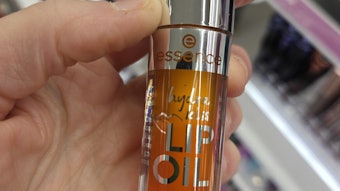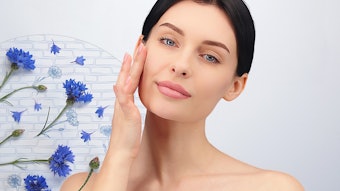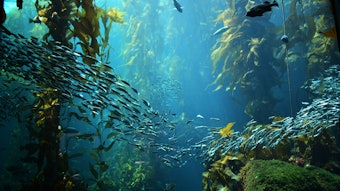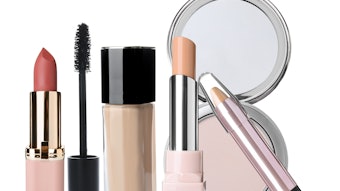
Read the full article in the July/August 2021 digital edition. . .
As with all new trends, the waterless concept is now reaching its peak. Oftentimes, beauty innovation starts in East Asia, home to world pioneers of beauty and skin care. This market has been capable of transforming and adapting concepts or ideas invented elsewhere into successful worldwide tendencies. This was true for BB creams, first invented in northern Germany in the 1960s to protect delicate skin after surgical treatments, 1which then spread as a new concept of skin care. In a similar way, this is happening for waterless beauty routines.
Dry shampoo, for example, is now considered a veteran concept in beauty but the mentality around this type of product has quickly evolved. The “no poo” (“no shampoo”) trend originated in the United States, born out of the alarmism demonizing the sulfates commonly used in shampoos. However, this trend required consumers to completely give up on hair cleansing.
A less extreme alternative produced the idea of cleansing balms—low-foaming products that achieve a balance between cleansing and conditioning without “aggressive surfactants.” The ingredients in cleansing balms produce significantly less lather than those more commonly found in standard shampoos, therefore requiring a smaller volume of water for rinsing.
While initially the “no poo” movement mainly focused on preserving the well-being of the hair and scalp, it evolved to preserving water. In fact, the water crisis has been at the top of the list of long-term global risks since the World Economic Forum in 2015. Big companies began to study alternative production processes, extraction techniques, product uses, etc., that could reduce the consumption of water while also considering the sustainability challenges.
Defining ‘Waterless’
In Euromonitor’s 2016 Beauty Survey, “water-efficient to use or produce” was ranked highly among consumers as one the most important green features for shampoo. For 12.5% of global respondents, water efficiency was one the most desired product features—a higher percentage than even recyclable packaging or sustainably sourced ingredients.2 This means water must be efficiently used, not just omitted from products. Of course, the reduction of water in different categories of cosmetics could bring several advantages for more sustainable beauty.
As an example, consumers wash their hair and body regularly using cleansing products that are applied under the shower and rinsed with hot water. In relation, it was found that the most relevant impact categories involving shampoos are climate change and water resource depletion; more than 90% of water depletion takes place during the usage phase (see Figure 1).3
Secondly, skin and hair cleansing products such as hair and body lotions contain more than 85% water. Water helps to smooth and easily spread gels over the large surface of the skin and hair by increasing the volume of product to spread. However, a drawback of water is that it is considered heavy; i.e., of a high specific gravity. This leads to an increase in cost and CO2 emissions during transportation as well as the need for larger plastic bottles. In the case of skin care products, the percentages of water content are significantly lower; i.e., between 50% and 75%. Moreover, the usage routine does not usually require additional water since these are typically leave-on products.
In both cases, waterless could mean a reduced use of water during the different phases of production; whether it be with raw materials, finished products, cleaning machinery, etc. Many big companies have pledged to reduce water usage per unit of product by re-treating wastewater or by minimizing the water requirements within manufacturing operations. Recently, spraying solid carbon dioxide has even been proposed as a plant-cleaning device.
For ingredients, especially considering increasing demand for naturals, selecting ingredients derived from plants that are cultivated with water efficiency in mind could be a good sustainable, water-friendly approach.
Packaging provides yet another opportunity to dramatically reduce water use and a product’s carbon footprint. For example, by substituting the valve in a spray bottle, if a conventional 150-250 mL hairspray can deliver around 40 applications, the same amount of active solution could be applied as reduced-water concentrate from a 75 mL compact aerosol. The compact aerosol can, which is half the size of a normal can, also contains approximately 60% of the propellant mix yet keeps the same number of applications.4
Water-conscious Cleansers
Cleansing products and routines are perhaps the most affected by the new waterless wave, and as shown in Figure 1. As mentioned, one way to reduce water consumption is by educating consumers and changing their behavior under the shower. Although convincing them to shorten their hot, relaxing shower could prove challenging, optimizing products for less water use supports the feasibility of this approach.
On the contrary, the amount of water present in a formula is not easily reduced. The logical way to decrease the water quantity would be to make the product more concentrated. If not adequately formulated, however, the application of the product could be difficult; e.g., developing a small area of thick foam that is unusable for a full shampooing. The consumer would then need to increase water use to improve the spreading properties of the product.
Therefore, the target would be to develop a liquid concentrate but with high spreadability. The challenge is to keep the properties the consumer demands, including: ease of use, smooth and effective spreading, an agreeable foam, long-term stability, a nice after-feel and safety for skin. To achieve this, first, the viscosity of the product must be reduced in order to facilitate dilution with added tap water. Moreover, the right dose for each shower should be defined via an adequate dispensing system.
Lastly, the combination of surfactants also should be similar to that of a standard cleanser but in different ratios. Considering an amount of total active matters (AM) of 40-50%—more or less 4× that of a standard cleanser—the ratio of the anionic surfactant cannot be higher than 0.60-0.70. The addition of an amphoteric secondary surfactant at 0.20-0.40 may help to reduce the viscosity and improve transparency. A nonionic surfactant could additionally be used as a modifier at very low ratio (< 0.10).
. . .Read more in the July/August 2021 digital edition. . .
References
- The Experts at Garnier, Contributor (2012, Mar 26). BB cream: The next big thing in beauty? The Huffington Post. Available at: https://www.huffingtonpost.ca/the-experts-at-garnier/bb-cream_b_1214401.html
- Symons, H. (2017, Jan 22). Shampoo in a looming water crisis: Less lather gathers pace. Euromonitor International. https://blog.euromonitor.com/shampoo-looming-water-crisis-less-lather-gathers-pace/ (accessed May, 2021)
- Golsteijn, L., et al. (2018, Sep) Developing product environmental footprint category rules (PEFCR) for shampoos: The basis for comparable life cycle assessment. Integrated Environmental Assessment and Management. (14)5.
- Kremer, J., et al. (Oct, 2014). Sustainovations at cosmetic industry with optimized carbon footprint. 28th IFSCC Congress.











